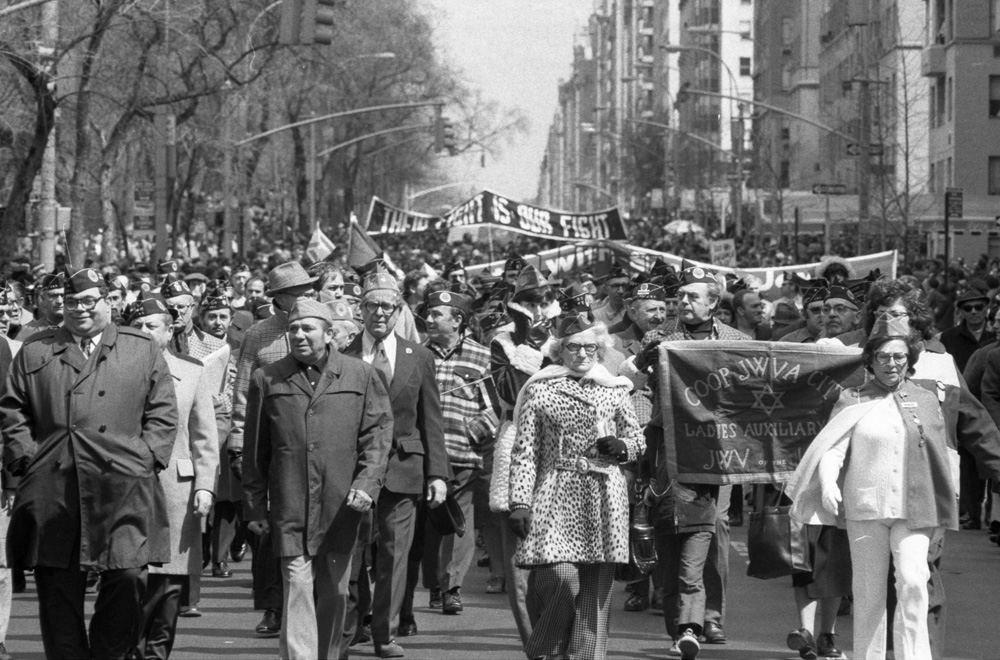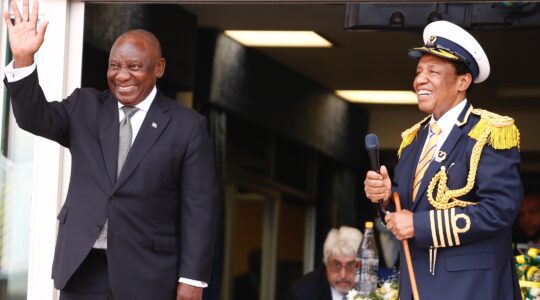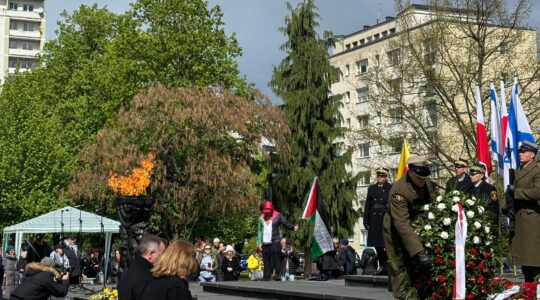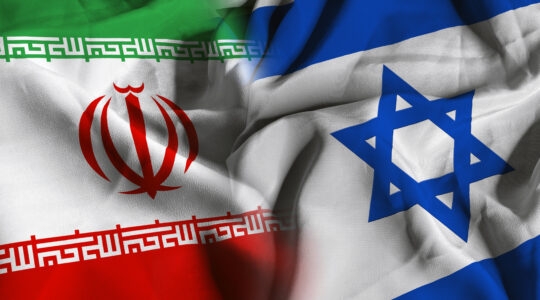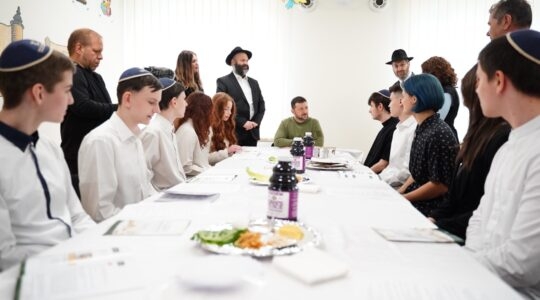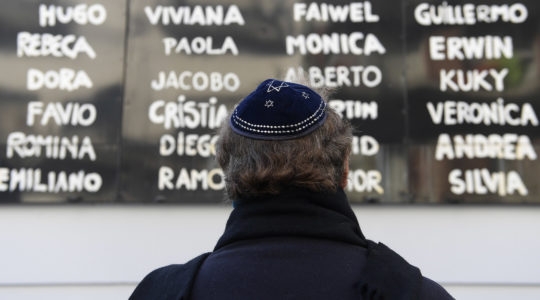In the 20th century, the Soviet Jewry movement helped define and form the two largest Jewish communities in the Diaspora, those in the United States and in the Soviet Union. The movement, which started in the 1960s, had as its goal to allow the free emigration of Jews, but it also allowed these two communities to overcome the deep scars they were each left with following the Holocaust. American Jews were psychologically scarred from not having done enough to help their European brethren during World War II, and for Soviet Jews there was a scar that ran the length of the Iron Curtain, a physical separation from the Jewish people and spiritual disconnect from the past and heritage.
The Nazi push into the Soviet Union in 1941 made the situation of Jews dire, as the Germans massacred Jews in the territory they conquered. The JTA was the first to report the slaughter at Babi Yar in September 1941, which typified the atrocities inflicted during that period. By the end of the war, 532 synagogues had been destroyed by the Nazis.
After World War II, Stalin became paranoid about his Jewish population and imagined they were a fifth column that needed to be stopped. This manifested itself in the infamous Doctors’ Plot in 1952 and in his attempts to marginalize Jews in Soviet society by increasingly depicting them as enemies. It became clear to the rest of the Jewish world, even after Stalin’s death in 1953, that the Soviet Jewish community was suffering a slow death of assimilation and, as some began referring to it, “spiritual strangulation”.
From the first stirrings of a movement – on college campuses in the United States and in the Soviet underground – the JTA made attempts to capture the story. As early as 1964, reports of unprecedented Simchat Torah celebrations by as many as 15,000 Moscow Jews, dancing and singing in front of the city’s Great Choral Synagogue, were making it out to the West. The Student Struggle for Soviet Jewry, one of the first grassroots groups mobilizing around the issue, held its founding demonstration on May 1, 1964. Early grassroots centers of American Jewish activity could also be found in other cities like Cleveland and Philadelphia .
But the movement only gained force in the 1960s as individual cases became more widely known, particularly as a result of press coverage. One of the first such stories was the arrest and trial of Boris Kochubievsky, an engineer in Kiev who, following the Six Day War, decided to protest his situation and try to leave the Soviet Union. The JTA covered the shady circumstances of his detainment in the summer of 1969 and then the reaction it elicited in the West, both New York and London.
However, the event that truly transformed the movement from being the province of a handful of student and grassroots activists in the West and a few brave dissidents in the Soviet Union into a global cause was the Leningrad Hijacking. This was the story of a handful of Jews from Riga and Leningrad who had been refused exit visas – becoming some of the first refuseniks – and decided to protest their plight by hijacking a small, 12-seater plane and flying it out of the Soviet Union. The KGB was on to them from almost the beginning, but let them continue until June 15, 1970, when they were all arrested on the tarmac. That December, the Soviet Union organized a major show trial and in the end the two leaders of the plot were sentenced to death. The JTA covered the enormous world outcry, from the threats by Meir Kahane that he would kill “two Russians for every Jew” to the unprecedented gathering in Washington to urge President Richard Nixon to press the Soviets. After only a week and a half, the Soviet relented and commuted the death sentences.
As the 1970s progressed, the Soviet Jewry movement grew and developed into an institution of American Jewish life. Two large, national organizations were founded devoted solely to the issue, the National Conference on Soviet Jewry and theUnion of Councils. And American Jews mobilized around the Jackson-Vanik amendment, a piece of legislation that would make any trade relationship with the Soviet Union contingent on a freeing up of emigration. The community even had toconfront Secretary of State Henry Kissinger, who was opposed to making this moral issue part of American foreign policy. Eventually at the beginning of 1975, after a two-and-a-half-year battle, it was signed into law.
The 1970s also saw the emergence of some prominent refuseniks whose stories were reported on in detail by the JTA. Much attention was spent on the tribulations and often trials of people like Vladimir Slepak and Ida Nudel . But no individual refusenik became better known than Anatoly Shcharansky, an activist involved with both the Jewish movement and the struggle for democracy and human rights in the Soviet Union. He was arrested in 1977 and put on trial in the summer of 1978. He was sentenced to 13 years in prison. The JTA also covered the campaign of his wife, Avital, who was a constant presence advocating for his release throughout his years in prison.
When Shcharansky was finally let go in 1986 it was one of the first signs that the Soviet Union was changing its attitude about its Jews. Mikhail Gorbachev was looking for rapprochement with the West and Ronald Reagan had made it clear – as had the American Jewish community – that freeing up emigration would be the price. In 1987, what the JTA first described as a “stagnant low” in emigration turned into a nine-fold increase, along with the release of most of the longtime refuseniks.
For many American Jews, the apogee of their Soviet Jewry activism came in December 1987 when they participated in a massive protest that greeted Gorbachev on his first visit to Washington. Jews from all over the United States went to great lengths to attend. Eventually a quarter of a million showed up, sending a strong message to the Soviets. It wasn’t long before the exodus began.
Gal Beckerman is the author of “When They Come for Us, We’ll Be Gone” (Houghton Mifflin Harcourt, 2010).
Other articles of interest:
1920s
1923 Russian Jews Ignorant of Palestine Visas Awaiting Them
1923 Joint Foreign Committee of British Jews charge Soviets turning Jews into Atheists
1926 Soviet Government Plans Jewish Republic in Siberia
1927 Russian Jews Describe Religious Needs in Memorandum to Government
1929 Matzoth Importation Continues as Issue in the Soviet Press
1930s
1933 Soviet Refuses Permission to Manufacture Matzo in Moscow
1935 Non-Russian Jews to be Settled in Biro-bidjan Next Spring
1938 Reich Opens Drive to Oust Soviet Jews; 60 Ordered Deported
1939 Nuremberg Laws for Soviet Jews Seen in Reich as Part of Red-Nazi Pact
1940s
1941 Nazis Launch Radio Drive on Soviet Jews; Urge Russian Troops to Turn Bayonets on Jews
1941 Nazi Anti-Jewish Atrocities Described at Meeting in Moscow
1944 Evacuated Russian Jews Return to Liberated Areas in the Ukraine
1945 532 Synagogues Destroyed in Russia by Nazis, Soviet Investigation Body Discloses
1949 Uproar Over the Soviet Union Breaks Out at Convention of World Jewish Congress
1950s
1953 Jews Throughout World Alarmed Over Moscow Anti-Jewish Plot
1955 Mass Arrests of Jews in Moscow Reported; Jewish Homes Raided
1956 Khrushchev Says Stalin Fabricated Anti-Jewish ‘Doctors Plot’
1956 Soviet Makes Jews “Collective Enemy” Argentine Socialist Charges
1958 Future of Jews in Russia Seen Dependent on Western Pressure on Moscow
1960s
1961 US Jewish Groups Complain to UN on Treatment of Jews in Russia
1963 Dr. King, American Negro Leader, Attacks Soviet Policy on Jews
1965 97,000 Israelis Sign Petition to Knesset to Act on Jews in Russia
1966 Moscow Rabbi Reported Surrounded by Suspected Government Agents
1968 Student Struggle for Soviet Jewry Plans New York Store-front Activities Centers
1970s
1970 Soviet Jewry Day Proclaimed in Latin-America; Meetings Scheduled in Jewish Communities
1971 Soviet Embassy Refuses Petition Signed by 700 Scientists on Behalf of Soviet Jews
1972 25 Soviet Jewish Musicians Fired
1978 200,000 People in Soviet Jewry Rally
1980s
1983 Soviet Jewry Expert Says There Is a Need to Get the Soviet Jewry Cause Back on the Track
1984 Moscow Rabbi Sharply Criticized For Saying That Soviet Jewry Rally Was An Anti-Soviet Event
1987 Abram Gloomy About Soviet Jewry After Reagan-Gorbachev Summit
1989 Soviet Jewry Movement to Reexamine Stance on Soviet Trade Relations
1989 Soviet Jewish Vaad Established; First Umbrella Group in History
1990s
1990 Soviet Immigration to Israel Passes the 100,000 Mark for 1990
1991 Secret Effort to Aid Soviet Jews Officially Revealed After 40 Years
1991 What Do Soviet Jewry Groups Do Now That the USSR No Longer Exists
1996 Years After Washington March, Fear for Russian Jewry Revived
1997 Matzah Played Central Role in Survival of Soviet Jewry
2000s
2002 Symbolism is Heavy as Bush Visits St. Petersburg Synagogue
2002 Half a Century Later, Events Honor Jewish Writers Executed By Stalin
2004 Across the Former Soviet Union: With Russian Police as Guards, Jewish Children Enjoy Summer Camp
2005 Across the Former Soviet Union: Russian-U.S. Jewish Groups Form Long-Distance Relationship
